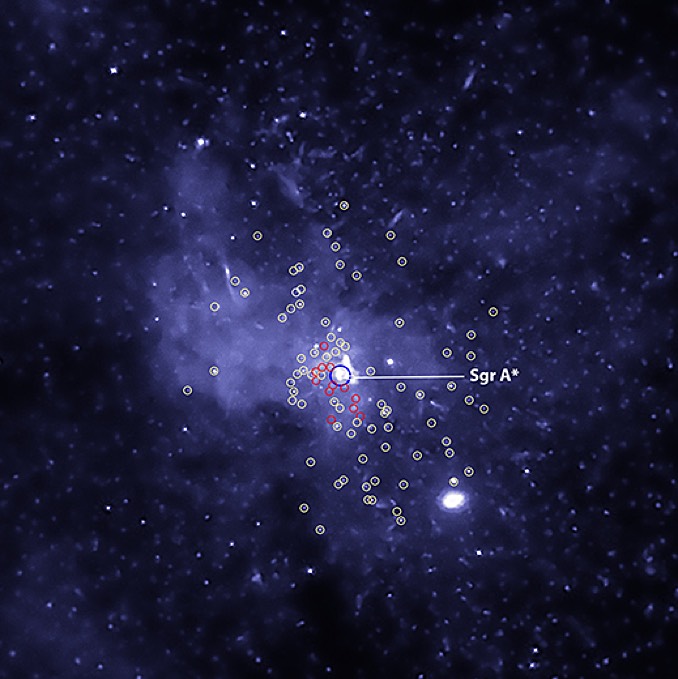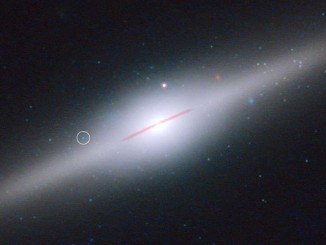
The Chandra X-ray Observatory has found direct evidence for up to 10 stellar-mass black holes and, by statistical extension, thousands more lurking within a few lightyears of Sagittarius A*, the supermassive black hole at the center of the Milky Way.
Previous studies of stellar dynamics indicated a large number of stellar mass black holes – suns with five to 30 times the mass of the Sun – could be expected to migrate inward over the galaxy’s multi-billion-year history. The Chandra observations represent the first observational evidence supporting that scenario.
Chuck Hailey of Columbia University in New York led a team of researchers using Chandra to search for X-ray binaries within about 12 light years of Sgr A*. An X-ray binary is a system in which a black hole or neutron star pulls gas away from a companion. The gas is accelerated and heated to millions of degrees, emitting X-rays before plunging into the black hole.
Looking for X-ray binaries with similar signatures to those closer to Earth, the team identified 14 within three lightyears of the galactic center. Two of those likely contain neutron stars and were eliminated from the analysis. In the image above, the remaining dozen are highlighted by red circles. The white circles indicate binaries containing white dwarf stars.
Because only the brightest X-ray binaries containing stellar mass black holes can be seen from Earth’s vast distance, the Chandra detections suggest a much higher number of undetected black holes binaries, possibly up to a thousand or more, near the heart of the galaxy.
And that’s not all.
A theoretical analysis by Aleksey Generozov and colleagues at Columbia found that stellar mass black holes without companions should be even more numerous. Their calculations show 10,000 to 40,000 such black holes could be congregating near Sgr A*.
The authors of a paper in the 5 April issue of the journal Nature say they cannot rule out the possibility that spinning neutron stars – millisecond pulsars – represent about half of the dozen directly observed candidates, but they “strongly” favour the black hole explanation based on the observed X-ray signatures.



